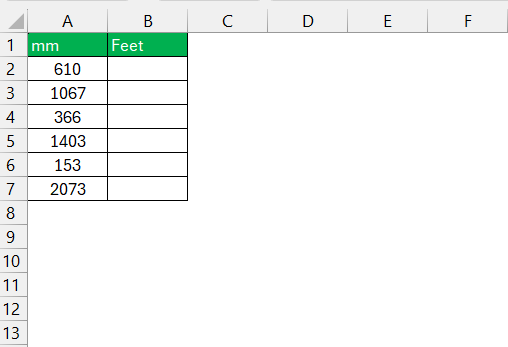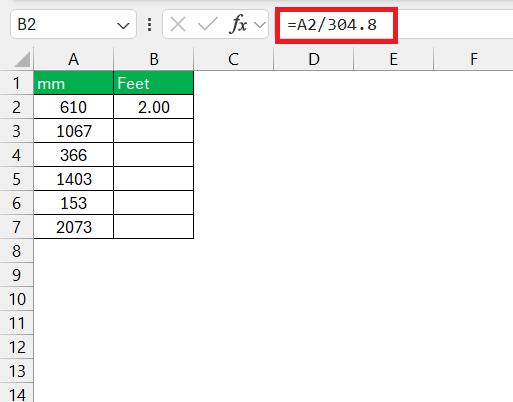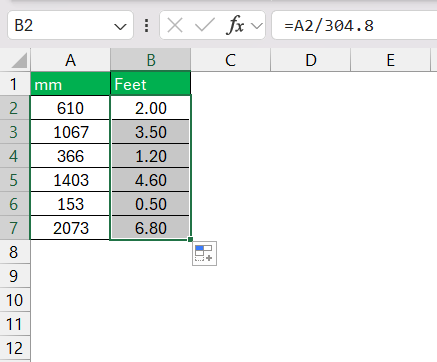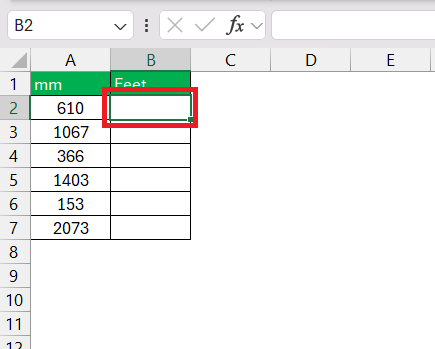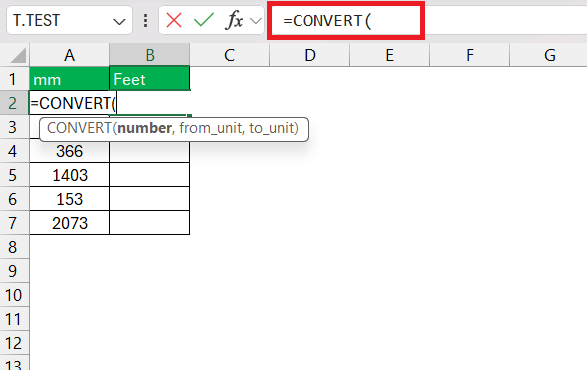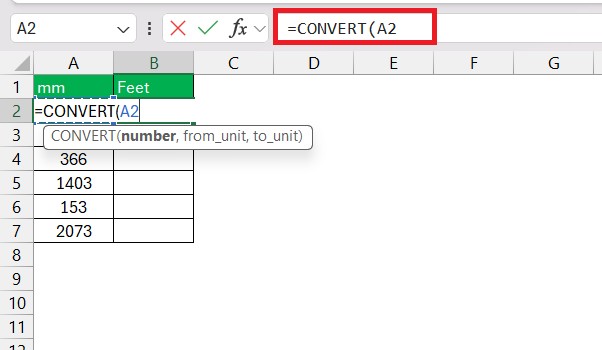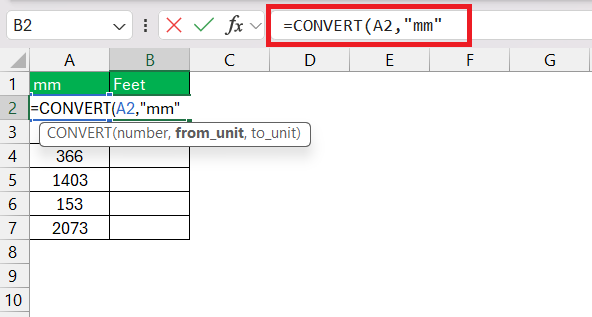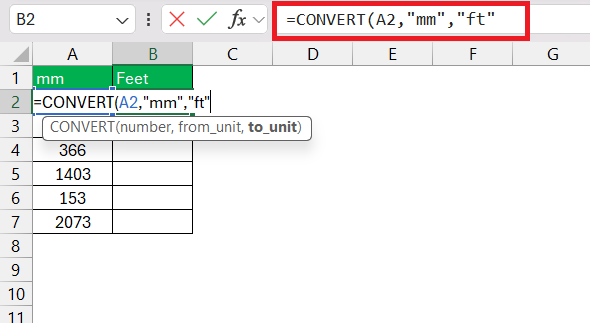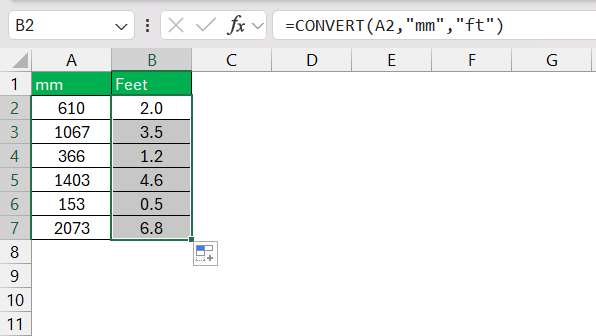Microsoft Excel is a powerful tool that can be used for various types of data analysis, including unit conversion. Converting measurements from millimeters (mm) to feet (ft) is a common task, especially in fields like engineering, construction, and science. This guide will walk you through the process of converting mm to feet in Excel, using both simple formulas and built-in functions.
Key Takeaways:
- Conversion Formula: Use the formula =A1/304.8 to convert mm to feet in Excel, where A1 contains the millimeter value.
- CONVERT Function: Excel’s CONVERT function simplifies unit conversion. Use =CONVERT(A1, “mm”, “ft”) to change millimeters to feet.
- Practical Applications: Converting measurements is crucial in various fields like logistics and construction to ensure accuracy and consistency in data handling.
- Avoiding Mistakes: Common errors include mixing up units or misspelling them in formulas. Always double-check units and use absolute references to ensure correct conversions.
Table of Contents
Introduction to Excel Conversions
The Need for Conversion in Excel
Imagine working on a construction project design or through a shipment’s inventory that lists dimensions only in millimeters, but your entire team operates with feet and inches. Quite the headache, right? Converting units of measurement in Excel becomes not just a convenience, but a necessity, ensuring clarity and consistency across various business operations and international dealings.
Quick Overview of mm, Feet, and Inches
Millimeters and feet, with inches being thrown into the mix, can make measurements look like a jumble of numbers. Here’s a quick rundown: Millimeters (mm) are the tiny titans of the metric system, a thousandth of a meter each. In more familiar imperial terms, an inch is equal to roughly 25.4 mm. Feet (ft) then comes into play as the larger imperial units, where one foot equals 12 inches.
This interplay of units calls for some mental (or digital) gymnastics to convert between the two, making an understanding of these measurements crucial in various applications from construction to crafts.
Step-by-Step Tutorial: mm to Feet & Inches
Method 1 – Simple Divison
Before we dive into Excel, it’s essential to understand the conversion factor between millimeters and feet. There are 304.8 millimeters in a foot. Thus, to convert millimeters to feet, you can use the following formula:
Feet = mm/304.8
Follow the steps below to convert mm to feet using a simple formula in Excel –
STEP 1: Open Excel and enter the millimeter values you want to convert in a column. For instance, place these values in column A starting from cell A2.
STEP 2: In the adjacent column (e.g., column B), enter the conversion formula. The millimeter value is entered in cell A2, and you can enter the following formula in cell B2:
=A2/304.8
STEP 3: Drag the fill handle (a small square at the bottom-right corner of the cell) down the column to apply the formula to other cells. This will convert all millimeter values in column A to feet in column B.
Method 2 – CONVERT Function
Diving into Excel’s treasure trove of functions, you’ll discover CONVERT, a tool that effortlessly changes numbers from one unit of measurement to another. Providing a bridge between different measurement systems, the CONVERT function in Excel accepts a specific syntax:
=CONVERT (number, from_unit, to_unit).
By specifying the value to be converted (number) and defining the current (from_unit) and desired units (to_unit), you can transform measurements like a wizard. This function supports an array of unit types such as weight, distance, pressure, and much more, catering to virtually any need you might have for unit conversion.
Follow the steps below to convert mm to feet in Excel using the Convert function –
STEP 1: Click on the cell where you want your converted value to appear
STEP 2: Type in =CONVERT( to initiate the function.
STEP 3: Input the numerical value you are converting, or reference the cell that contains it.
STEP 4: After the number, enter a comma and type in “mm”, to set the original measurement unit.
STEP 5: After a comma, type in “ft” to indicate the desired unit.
STEP 6: Close parenthesis and press Enter.
The value in feet will now display in the cell where you’ve entered the formula.
Practical Applications of Measurement Conversions in Excel
Addressing Logistics Challenges with Precise Conversions
In the logistics industry, the margin for error is razor-thin, and precise conversions are integral to success. Understanding the exact dimensions of cargo can be the difference between a smooth shipment and an expensive oversight—like mishaps with trailer heights or the misjudgment of cargo space.
With the aid of Excel and appropriate conversion formulas, logistics professionals can guarantee that their measurements are spot-on, whether they’re fitting cargo into containers, arranging transportation requirements, or verifying clearances for trailers. Precision here not only saves time and money but also preserves safety and compliance across borders, where measurement standards can vary.
Customizing Signage Measurements Using Excel
Signage companies often receive specifications in a variety of measurement systems, prompting the need for a reliable tool like Excel to customize and convert measurements into the required units. By inputting measurements into Excel and utilizing conversion formulas or built-in functions like CONVERT, signage professionals can accurately transform mm into feet and inches, ensuring that the final product perfectly fits the client’s dimensions.
The practicality of this system shines through by enabling quick adjustments in designs and material estimates, thus providing a seamless bridge between design conception and physical implementation.
Troubleshooting Conversion Issues
Common Mistakes and How to Avoid Them
When dealing with conversions in Excel, a little slip can lead to big problems. Common mistakes include mixing up units, misspelling unit codes in the CONVERT function, or forgetting to use absolute references in formulas when copying them across cells.
To steer clear of these pitfalls, always double-check the units you’re using, make sure you’ve got the right spellings from Excel’s unit list, and use absolute references (with the dollar sign $) to lock specific cells in place when applying the formula across a table or range. Additionally, using the ‘Trace Precedents’ feature can help you pinpoint where a formula is getting its data from, making troubleshooting much easier.
FAQs for MM to Feet Conversion
How to convert mm into feet in Excel?
To convert millimeters to feet in Excel, use the CONVERT function: enter =CONVERT(cell_reference, "mm", "ft") in a cell, replacing cell_reference with the actual cell containing the mm value.
How do I accurately convert millimeters to feet in Excel?
For an accurate conversion from millimeters to feet in Excel, first ensure your data is correctly entered. Then use the formula =CONVERT(number, "mm", "ft") replacing number with the cell containing your mm value or the value itself. Always verify the result using a proper conversion table for accuracy.
Can you provide an example of converting mm to feet and inches in Excel?
Certainly! To convert mm to feet and inches in Excel, use the formula: =INT(CONVERT(A1, "mm", "in")/12) & " ft " & MOD(CONVERT(A1, "mm", "in"), 12) & " in". Replace A1 with the cell containing mm. This provides feet and the remaining inches.
How do I change from mm to inches in Excel?
To change mm to inches in Excel, use the formula =CONVERT(A1, "mm", "in"), where A1 is the cell with the mm value. This will give you the equivalent inches.
How to calculate feet in Excel?
To calculate feet in Excel, divide the measurement in inches by 12 and use the INT function to get the whole number of feet: =INT(A1/12), where A1 is the cell with inches. This gives you the measurement in feet.
John Michaloudis is a former accountant and finance analyst at General Electric, a Microsoft MVP since 2020, an Amazon #1 bestselling author of 4 Microsoft Excel books and teacher of Microsoft Excel & Office over at his flagship MyExcelOnline Academy Online Course.

